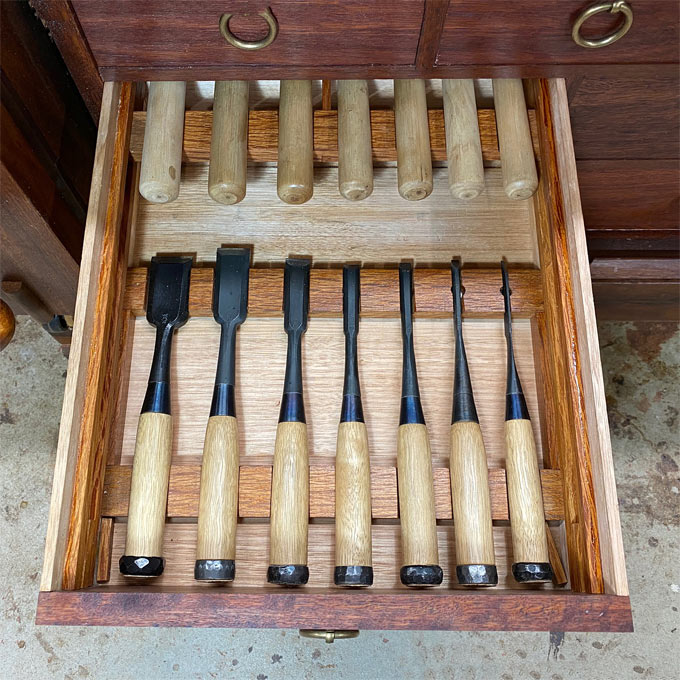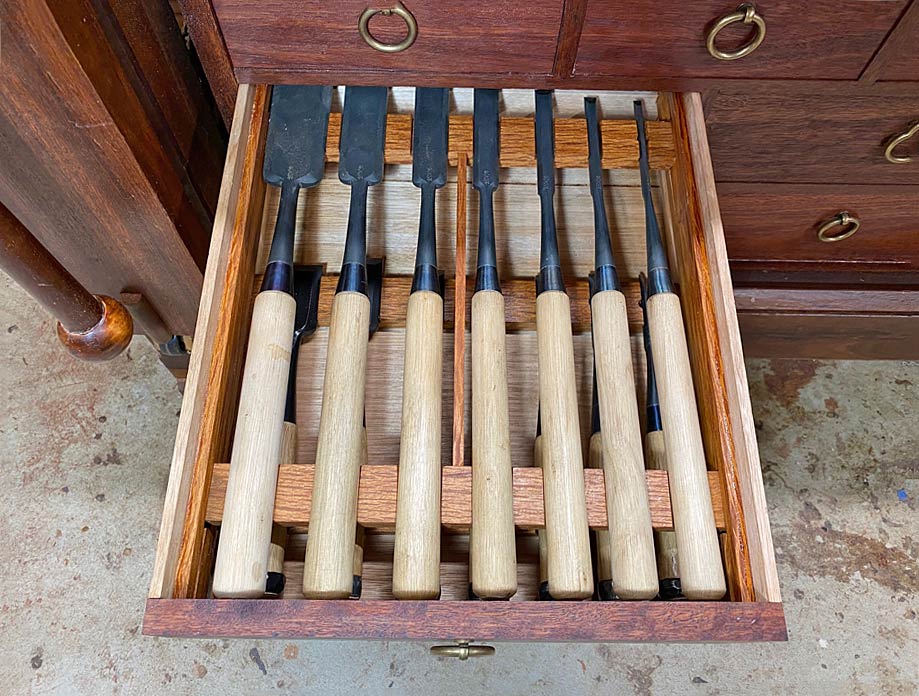Hornbeam
Established Member
I have always used traditional UK made bevel edged chisels, mainly Sorby or Ashley Isles. I can get these nicely sharped and they work well
Many years ago I thought I would try a Japanese bench chisel just to see what it was like
It takes a razor edge which it holds well but just felt awful to use
Scroll on about 10 years and curiosity got the better of me and I bought one of David Charlesworth old stock at Harrogate. What a difference. The chisel is significantly shorter and generally much lighter. It is a pleasure to use along with a fantastic edge. Interestingly there was no hoop fitted but it had been rounded over more like a western chisel
The chisels are clearly different but am I missing something in the type etc
Ian
Many years ago I thought I would try a Japanese bench chisel just to see what it was like
It takes a razor edge which it holds well but just felt awful to use
Scroll on about 10 years and curiosity got the better of me and I bought one of David Charlesworth old stock at Harrogate. What a difference. The chisel is significantly shorter and generally much lighter. It is a pleasure to use along with a fantastic edge. Interestingly there was no hoop fitted but it had been rounded over more like a western chisel
The chisels are clearly different but am I missing something in the type etc
Ian








